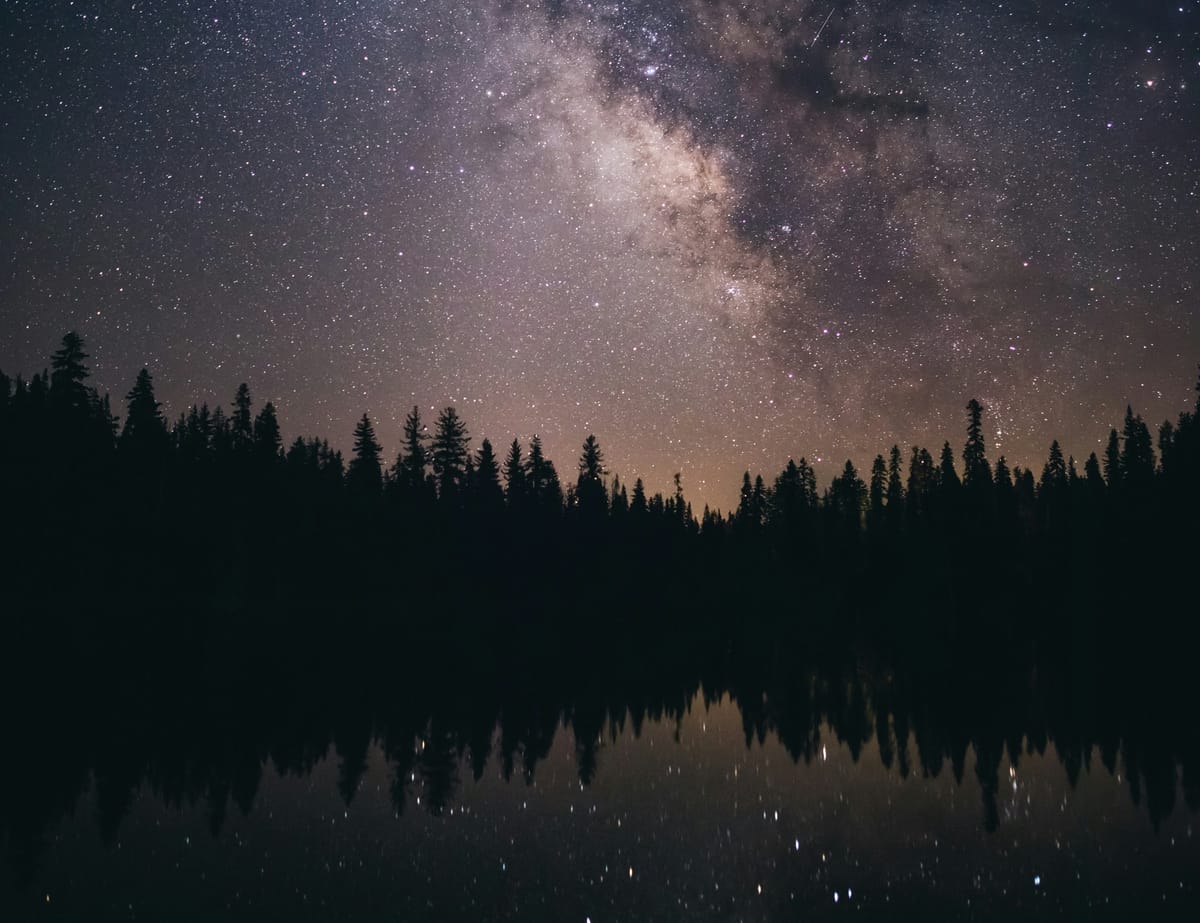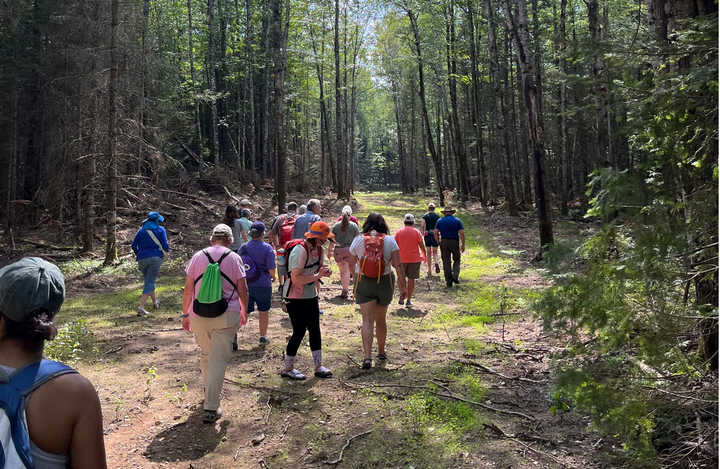Explore the Night Sky During Lights Out! Initiative

Two weekends are set aside this summer where people in the Northwoods are encouraged to turn off their lights, go outside, sit in the dark and "see what they can see."
The third annual Northwoods Lights Out! initiative will take place June 27-29 and Aug. 22-24 to preserve the area's dark skies and give people the opportunity connect with the nature around them as they listen to and observe the activities of bats, insects, fireflies, and of course, the night sky.
Vilas and Oneida county land and water departments are putting on the Northwoods Lights Out! with assistance by The Northwoods Explorers, North Lakeland Discovery Center, and Town Line Lake Park. The two weekends were chosen for their concurrence with the new moon phases so the sky is as dark as possible.
Mariquita Sheehan, conservation specialist for Vilas County Land and Water, expressed her appreciation that there are parts of the Northwoods that are not overrun by light. "We really want people to experience this resource that we have here — dark skies," Sheehan said.
Darkness may be something that is taken for granted here in the Northwoods, but as more residential and commercial buildings expand their use of exterior and interior lighting — sometimes operating throughout all hours of the night — those sacred spaces are being lost. And the result is devastating for local insects and wildlife, and can also have negative impacts on humans as well.
According to data provided by the Oneida County Land and Water Department, artificial light can interrupt natural body rhythms in both humans and animals. An increased amount of light at night can lower melatonin production resulting in sleep deprivation, fatigue, headaches, stress, anxiety and other problems.
Studies also show that light pollution can influence animal behaviors like migration patterns, wake-sleep habits, and habitat formation. Because of light pollution, sea turtles and birds guided by moonlight can become confused and lose their way.
Light Pollution Affects Bats, Other Wildlife
Locally and globally, light pollution can affect our pollinators and insect breeding populations, which ultimately impact the animals that rely on those insects as a major food source. Sheehan explained one problem with light pollution for insects can be the color spectrum of the light.
"Insects are more attracted to white to blue hues, meaning they spend their energy on those lights rather than focusing on things like reproduction," she said. One simple step people can take to have less of an impact is to switch to yellow or amber-hued bulbs instead of the brighter blue and white lights.
Beloved critters like fireflies, monarch butterflies, hummingbirds, bats and owls are some of those most affected by light pollution. In Europe, bat research and how light pollution affects those animals has been a hot topic in recent years. Studies have shown that for bats, some of the effects appear to be from the intensity of the light rather than the color, and the types of lights used can also affect what species of bats will feed on the insects hovering near them.
Bats are very dependent on insects as a food source, and with the ever growing threat of white-nose syndrome, keeping these nocturnal creatures well-fed is more important than ever. According to Sheehan, if bats are "fat and happy" going into hibernation, they are more likely to survive the disease than those that are under-nourished.
Be Aware of Your Outdoor Lighting
Oneida County Land and Water states on their fact sheet that 80% of Americans cannot see the Milky Way due to light pollution. In addition, about 35% of outdoor light is wasted; costing about $3 billion to literally be lost to space.
Sheehan hopes this event will not only help people appreciate the darkness, and think about how and how often they light their property. She suggests paying attention to when using lighting is actually necessary versus leaving lights on throughout the night, and also pointing the lights in a downward direction where the light is not wasted by "shooting it into space."
The International Dark Sky Association offers small steps homes and business can take to combat light pollution.
- Install useful light only: All light should have a clear purpose. Consider how the use of light will impact the area, including wildlife and their habitats.
- Aim the light down: Use shielding and careful aiming to target the direction of the light beam so that it points downward and doesn't spill where it's not needed. Outdoor light fixtures that shield the light source can minimize glare and help prevent light pollution.
- Remember that brighter isn’t always better: Use the lowest light level required. Be mindful of surface conditions, as some may reflect more light into the sky than intended.
- Choose LEDs wisely — color does matter: Use warmer lights when possible, and limit the amount of shorter wavelength blue-violet light to the least amount needed.
- Use motion sensing lights or timers to help reduce illumination levels and save energy: Use controls such as timers or motion detectors to ensure that light is available when it is needed, dimmed when possible, and turned off when not needed. Reduce unnecessary indoor lighting at night, particularly empty office buildings.
Putting these tips to use not only can decrease the cost of your energy bill, but also the impact on the health and happiness of wildlife.
For more information on the event or ideas on how to limit your contribution to light pollution, contact Sheehan at Vilas County Land and Water at mashee@vilascountywi.gov or 715-479-3721.


